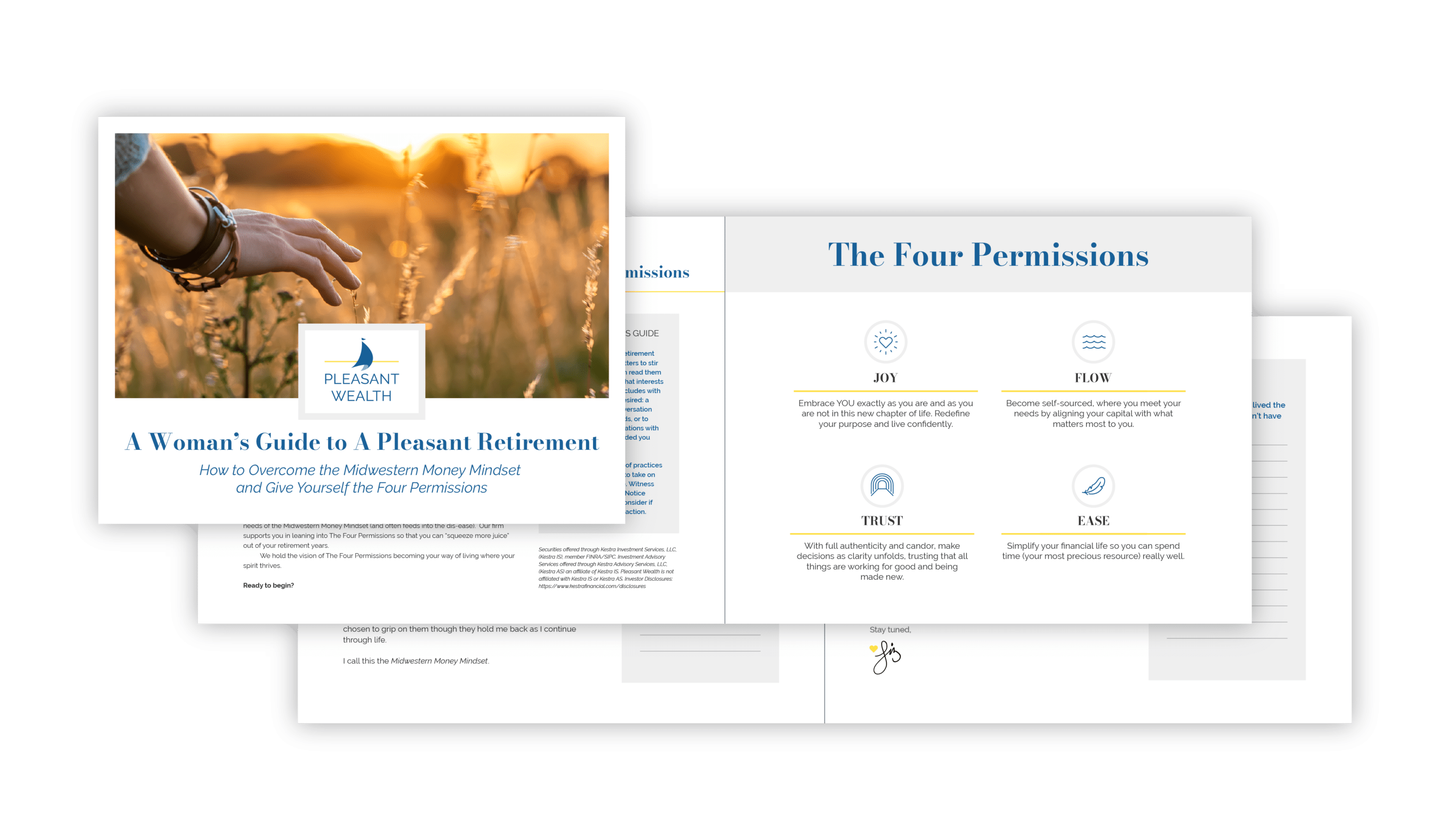Don’t go without downloading our free retirement guide!
A Woman’s Guide to a Pleasant Retirement
How to Overcome the Midwestern Money Mindset and Give Yourself the Four Permissions

Check the background of this firm on FINRA’s BrokerCheck →
Did you know that while 3 out of 4 Americans say they have a monthly budget, over 80% admit they still overspend?
How can that be, when most personal financial advice starts with budgeting as a foundation? Clearly, most people agree that having a budget is important, but unfortunately, there’s a breakdown between their intent and results.
Today we’ll cover the breakdowns we typically identify when new clients express frustration with their budgeting. I’ll end with a proven strategy our clients use for confident, hassle-free budgeting success.
But first: Why do most people suck at budgeting?
There are four common hurdles we see that keep clients from ensuring their intent aligns with reality. You may have heard of the KISS acronym for design (Keep It Simple, Stupid), but that also applies to the common budget issues.
A budget is just a tool that gives you better awareness about your money. It’s not a scorecard or a monthly willpower session to beat yourself up over. If you feel guilty whenever you unfold your bank statements, you’ll probably struggle to be consistent. You need to see how money flows in and out of your life. Everyone starts somewhere. Everyone needs to restart this process as life changes.
Try to start with as few categories as possible. The simpler this is, the easier it is for you to check in regularly. There are several apps that download and categorize your transactions from all your financial institutions. Some credit cards will categorize your spending for you on each monthly statement. Just gather your monthly statements and add up the totals spent each month. Group your spending into 5-10 categories.
I recommend excluding large expenses like a new car or a vacation from your monthly budget. Ideally, you should save ahead for large purchases- so these costs will be covered by the funds you’ve set aside, not from your monthly income. If you don’t have funds set aside for these, congratulations! Read on!
Look, “spending less” is not a helpful goal. Again, the point of budgeting is to build awareness of where money is going and spend more effectively toward the goals that matter.
First, name those goals:
And then identify the costs.
As part of your budget, the 50/30/20 Rule is a helpful guide to understand where your money should be going. Here’s how the rule works works:
After implementing your budget, check in once a month and see where the money is going.
Budgeting is a lot simpler if you start with concrete goals first. A CFP® professional can help you identify what your goals cost and make a plan for them. If you have questions about your budget or your investment plans, reach out to us today.
1) Assuming 4.5% interest rate.

Clinton Miller, CFP®, is an investment advisor & financial planner with an educational background in mathematics. He enjoys making tax planning relevant for clients so they can make confident money decisions.
He and his wife Aubrey are based in Canton, OH & have two sons. In his spare time, he enjoys fishing, chainsaw repair, & mucking around in the woods.